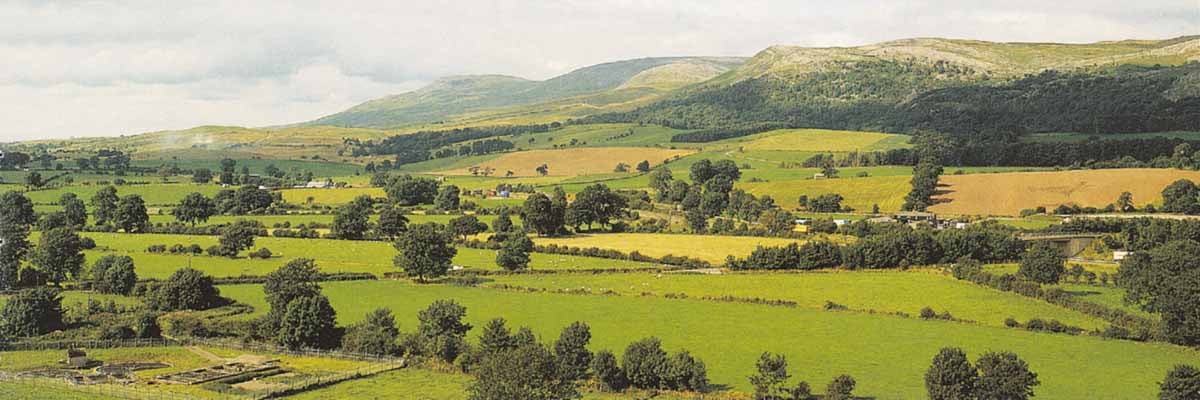Significance of Brough Castle
The significance of Brough Castle lies in part in the extensive remains of the Roman fort and associated civilian settlement, of which the surviving earthworks determined the form and layout of the medieval castle. The story of the castle is also inseparable from national political events and the fortunes of the Cliffords, one of the great warrior and castle-building dynasties of medieval England.

Roman Fort and Settlement
A great wealth of finds has been discovered in the vicinity of the fort, often by local people. Many may have been from the presumed civilian settlement (vicus), rather than the fort itself.
The most notable are lead seals and bronze brooches and other objects. Most seem to have come from an area just north of the castle, from the banks of the Swindale Beck and its tributary the Augill, which have been eroding the site of a Roman rubbish tip since the 19th century.
The fact that both lead and bronze objects were found in such huge quantities seems to confirm that the civilian settlement at Brough had important metalworking industries, but no trace of these has yet been found.
Only two Roman inscribed stones have been found at Brough. Both were built into the medieval parish church of St Michael and found during repairs carried out in about 1879. One of them (now in the Fitzwilliam Museum, Cambridge) puzzled scholars, who assumed that it was inscribed with runic (Danish or Viking) letters.
Later the writing was recognised as a Greek epitaph to a 16-year-old boy, Hermes, who had died at Brough and was from Commagene, the Roman province in south-eastern Anatolia (modern Turkey). The Brough stone is an extreme rarity, as only a few Greek inscriptions from Roman Britain have been found.
The Lordship of Westmorland
Brough and Appleby were the two original castles of the lordship of Westmorland, founded in the wake of William Rufus’s reconquest of the northern counties from Scotland in 1092. Hence they are significant as some of the first medieval defensive buildings in Cumbria.
The Cliffords
The castle is perhaps best known for its ownership by the Cliffords. An ancient Norman family who had been settled in the Welsh Marches since the late 11th century, they were one of the great dynasties of medieval England. Many of them fell in battle or otherwise died unnatural deaths.[1]
Brough is particularly closely associated with Lady Anne Clifford (1590–1676), the last of her family, who fought a protracted legal battle to inherit her father’s vast estates following his death in 1605. Refusing to accept any offers of a settlement, she finally gained ownership of the estates on her cousin’s death in 1643.[2]
By the time she returned from London to her family estates in Westmorland and Yorkshire in 1649, Lady Anne was almost 60. She spent the remaining 26 year of her life restoring and enhancing the castles and churches on her estates.
As well as Brough, Brougham, Appleby, Skipton and Pendragon castles, these included the churches of St Wilfrid and St Ninian Ninekirks at Brougham, almshouses in Appleby, and the Countess Pillar (dedicated to her mother) by the side of the Roman road south of Brougham Castle.
Her interest in her family’s history and her determination to gather evidence in support of her claim to their estates led her to compile three great volumes of material on Clifford family history. These ‘Greate Books of Record’ remain one of the primary sources of evidence for the family.[3]
Lady Anne became something of a legend in her own lifetime, and has remained a celebrated figure in the history of northern England ever since.[4]
